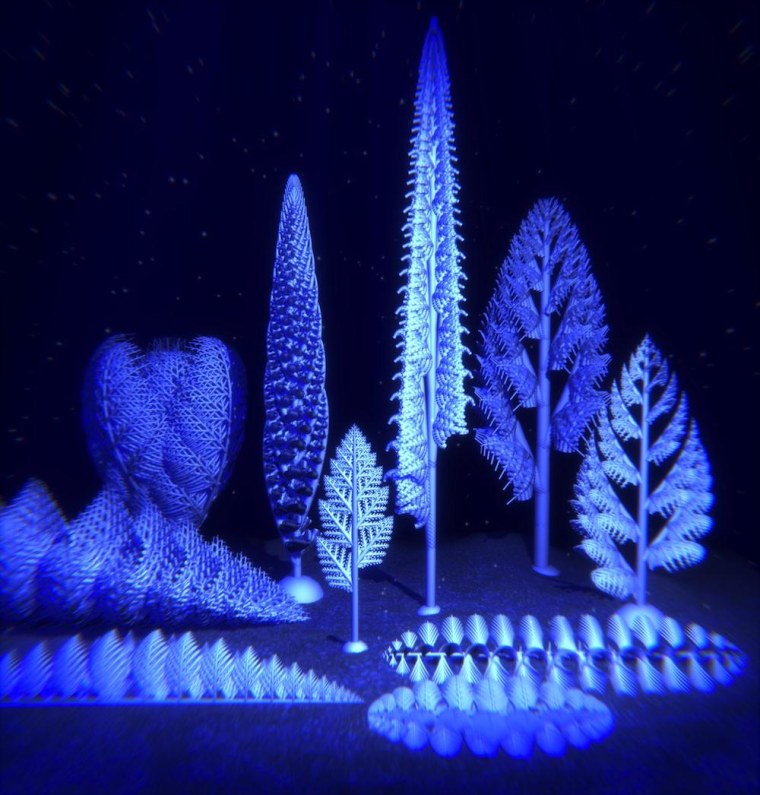About 600 million years ago, mysterious, frondlike creatures unlike anything found on Earth today filled the primeval seas. Now, new research is shedding light on how these sea creatures, called rangeomorphs, lived and why they went extinct.
At that time, all life trolled the seas, and most of it was algae or bacteria. These strange, frondlike creatures looked a bit like ferns, with fractal branches radiating from a central, stemlike body. Some could be up to 6.5 feet high, though most were closer to 3.9 inches in length.

"We know that rangeomorphs lived too deep in the ocean for them to get their energy through photosynthesis as plants do," study lead author Jennifer Hoyal Cuthill, an earth scientist at the University of Cambridge in England, said in a statement. "It's more likely that they absorbed nutrients directly from the seawater through the surface of their body."
But during the Cambrian explosion (a period of rapid evolution between 520 million and 540 million years ago), a menagerie of strange and mobile creatures began filling the seas. The new, fast-moving cast of sea organisms quickly snapped up the stationary, defenseless rangeomorphs.
"As the Cambrian began, these Ediacaran specialists could no longer survive, and nothing quite like them has been seen again," Hoyal Cuthill said in a statement. The study was published Monday in the Proceedings of the National Academy of Sciences.
—Tia Ghose, LiveScience
This is a condensed version of a report from LiveScience. Read the full report. Follow Tia Ghose on Twitter and Google+. Follow Live Science @livescience, Facebook & Google+.